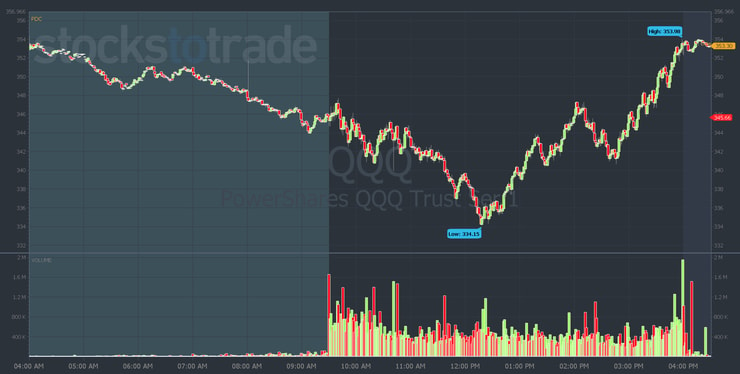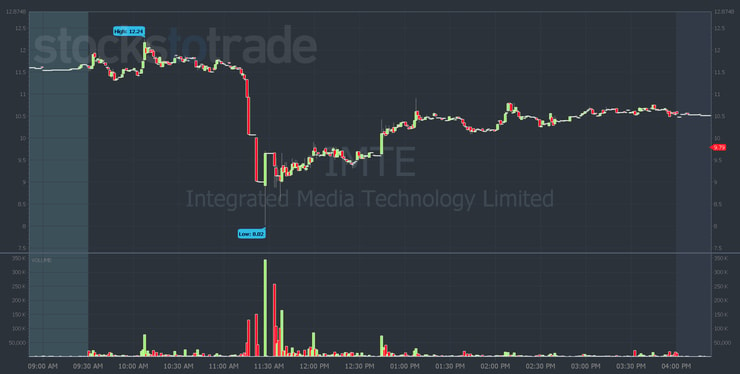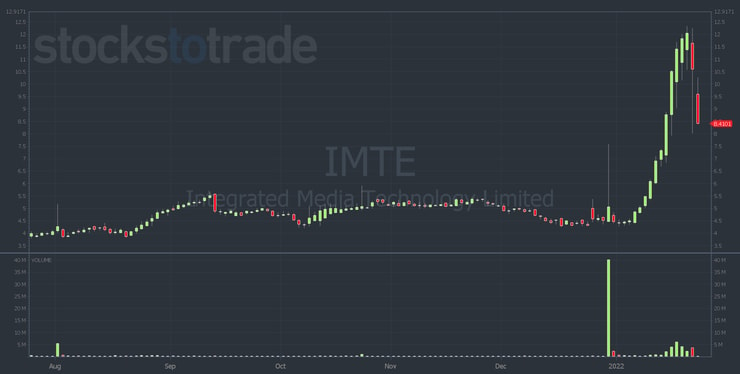The choppy market has a ton of traders FREAKED.
Not me. I love it.
In fact, I’m rooting for even MORE panic.
I know — it sounds counterintuitive. But a scary market can actually create incredible opportunities.
It’s all about having the right strategy and resources to find and take advantage of them.
Every day trader’s a little different — that’s why it pays to expose yourself to a number of different trading styles. The more knowledge you absorb, the more you can refine your own strategy.
Stay calm. Get informed. BE PREPARED! Act now.
Here’s why smart traders look forward to ugly markets…
Table of Contents
The State of the Stock Market

2025 Millionaire Media, LLCI’ve been warning my Trading Challenge students about a market correction or crash for MONTHS.
Not because I want to scare anyone, but because I want traders to be PREPARED.
Well, it finally happened…
After a week of falling off a cliff, the market put in a nice bottom on Monday and came back. It was only the sixth time the Nasdaq has reversed a 4%+ intraday drop to close green since 1988.
Tuesday started with another gap down before finding another bottom and … another bounce.
This kind of price action makes for a very tricky market.
My Game Plan for Trading a Choppy Market

2025 Millionaire Media, LLCWhat we’re seeing this week brings up something very important.
It doesn’t matter to me whether the market tanks or bounces, but this price action isn’t ideal. The best way to describe this week’s selling action is choppy.
That’s exactly why I’m hoping for a big panic. Let me explain…
Max Panic and Max Euphoria Lead to Predictable Patterns
This market’s been way overextended for the past two years. And the sell-off the past week is real damage. But there hasn’t been max intraday panic that I like.
Check out the QQQ (PowerShares Nasdaq ETF) intraday chart from Monday.

Even as it sold off around noon, there was a lot of fight.
That kind of choppy action doesn’t work for me. It makes dip-buying more difficult. It’s too easy to make common dip-buying mistakes. And that means I’m not as aggressive.
If I saw max panic, I’d be more aggressive.
That idea translates directly to individual stocks. To see what I mean about max panic, check out the Integrated Media Technology Limited (NASDAQ: IMTE) chart — also from Monday…

Now THAT’S max panic. That’s what I’m looking for.
IMTE fell from $11.60 to $8.02 in 20 minutes with two volatility halts. The panic was fast enough for stop losses to get taken out. If this had been an OTC (with no volatility halts) it probably would have gone even further.
The point is, if something’s dropping, I’m looking for max pain.
The more pain, the better chance it has of bouncing.
I probably wouldn’t have held through the choppy bounce you can see on the chart. But I’m constantly learning from plays like this.
I keep running my StocksToTrade scans, watching Breaking News Chat alerts, and studying charts like these so I can be prepared when I see similar plays.
That’s the BEST way to be prepared to pounce when a great trade comes along.
The Power of Looking for Extremes
Just like I look for max pain if something’s tanking, I’m looking for max euphoria if a stock is spiking. Look at the IMTE six-month chart…

Now you can see what set up Monday’s bounce. The fact it went from the $4.40s to $12.82 in seven trading days meant a ton of traders were watching it.
Even while the Nasdaq was selling off last week, IMTE was a multi-day runner. On Monday, as the Nasdaq was fighting on the way down, IMTE had already started to bounce. Yes, it was choppy. But it was bouncing.
In case you’re wondering … I didn’t trade IMTE on Monday. I missed it. Why?
More Breaking News
- GDS Holdings: Surge or Bubble?
- 3 Robinhood Penny Stocks Moving on Bitcoin & Trump News
- Global Interactive Technologies on a Roll: What’s Next?
You’ve Gotta Stick to Your Patterns

2025 Millionaire Media, LLCEven with max panic and a more predictable pattern, IMTE still didn’t fit two other indicators that are part of my strategy — price and time of day.
I prefer lower-priced plays. And I prefer the panic to be earlier in the day. So it was the perfect kind of pattern but too high priced and the wrong time of day.
I go for high-odds trades with limited risk. Remember, you can be wrong on any play. And losses aren’t the end of the world. If it doesn’t do what you want, get out.
But keep looking for max euphoria and max panic type situations. Learn from them so you can be prepared to take advantage of them in the future!
What do you think about the choppy market? Leave a comment and let me know if you’re rooting for max panic, too!









Leave a reply